
Everyone knows that to lose weight, you're supposed to eat fewer calories and burn more. The problem is, eating less than you'd like is often easier said than done.
You might be able to deal with hunger for a few weeks or even months, but at some point, hunger wins. And then, the weight tends to come back.
And it doesn't simply take more willpower to overcome hunger. Many experts compare willpower to a muscle - it is an exhaustible resource. Perhaps that is why diets that rely on willpower don't work well long term.
What's the best way to achieve weight loss in a healthy, sustainable way, without hunger or "white-knuckle" willpower?
The approaches that work tend to follow the same basic principles: eat the lowest calorie foods that fill you up, eliminate high-processed foods that don't, and make sure you get essential nutrition.
It sounds easy. But why do so many of us struggle with healthy weight loss?
This guide will tell you the best ways to achieve healthy weight loss. It has our top weight loss tips, what to eat and what to avoid, the common mistakes you might be making, how to eat fewer calories, and much more.
But first, what is "healthy weight loss?"
Healthy weight loss starts with setting realistic goals. After that, we define healthy weight loss as mainly losing fat mass instead of lean body mass, improving your metabolic health, having a minimal decline in your resting metabolic rate, and making sure you can maintain your dietary lifestyle long-term.
Get your personalized meal plan with a FREE 30-day trial!
If you're struggling with your weight, it may not be your fault. The industrial food environment is stacked against you. The good news is that there are effective approaches to reach your best weight and improve your metabolic health long term! Here's how.
Top 10 weight loss tips
- Avoid eating carbs and fat together. This combination provides excessive calories with little to no nutritional value - think pizza, cookies, chips, donuts, etc. - and may increase cravings.
- Eat at least 30 grams of protein at most meals. Protein foods are the most satiating and nutrient-dense type of food.
- On a low-carb approach, which is often a successful weight loss strategy, limit net carbs to less than 100 grams (or keep them as low as 20 grams per day, if you want to try a keto diet).
- Fill your plate with fibrous veggies. These provide abundant nutrients, high food volume, and relatively few calories.
- Add enough fat for taste and to enjoy your food, but not more than you need. Let's be honest, fat tastes great! Taste is an essential part of long-term nutritional success. But too much fat can add calories you don't need.
- If you're hungry, start with adding more protein and vegetables. Again, these are the most satiating and nutritious food for the fewest calories.
- Find foods you enjoy that fit the above criteria. Check out our recipes here.
- Stay physically active. You don't have to run marathons, but physical activity added to a healthy diet can help maintain fat loss while preserving muscle mass.
- Get adequate restorative sleep. Sleep like your health depends on it, because it does!
- Create an environment to promote your success. It isn't just about knowing what to do. It's also about creating the environment that will help you succeed. For example, removing tempting foods from your kitchen is just one great way to get started.

Get your personalized meal plan with a FREE 30-day trial!
What's your main health goal?
What foods to eat and what foods to avoid for healthy weight loss
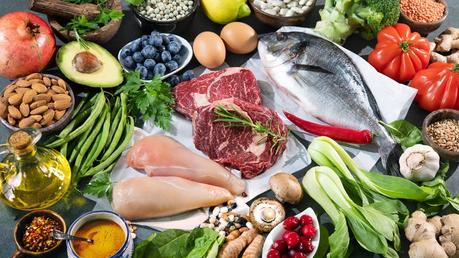
For healthy weight loss, you want to make every calorie count.
But that doesn't mean you have to count calories.
How is that possible? By focusing on the foods in the list below, you'll ensure you are getting adequate nutrition, eating filling foods, and naturally decreasing your caloric intake.
We recommend focusing the bulk of your nutrition on "foods with the most nutrition per calorie", consider portion control of foods with "moderate nutrition", and reduce or eliminate foods with the least nutrition per calorie. Give it a try!
Foods with the most nutrition per calorie:
- Meat and poultry
- Seafood
- Non-starchy vegetables
- Eggs
- Dairy products like yogurt and cottage cheese
- Soy, beans, and lentils
Foods with moderate nutrition per calorie:
- Cheese
- Nuts and seeds
- Fatty processed meats like bacon
- Starchy vegetables
- Low-sugar fruits like berries, olives, and avocados
- Whole grains
Foods with the least nutrition per calorie
- Combined high-carb and high-fat foods
- Foods with high amounts of sugar and refined starches
- Sugar-sweetened beverages and fruit juice
- Beer and sweetened alcoholic beverages
- Pure added fats like oil and butter
Are you still hungry between meals, or are you looking for ways to add more protein to your diet? Take a look at our guide on high-protein snacks for weight loss. You can choose from hard-boiled eggs, a can of tuna, beef jerky, lupini beans, black soybeans, and more.
No time to cook?
No problem!
We understand how precious your time is. With personalized meal plans, we do the planning for you. All you have to focus on is simple cooking and enjoying delicious food.

Why we recommend high protein for weight loss
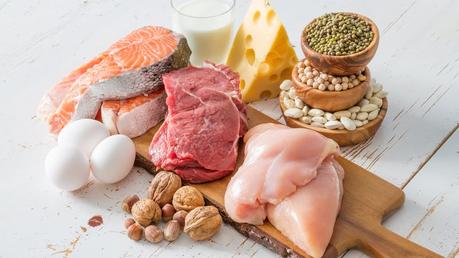
High protein almost always equates with high nutrition, meaning you get the maximum amount of nutrition per calorie. Whole food protein (steak, eggs, chicken, soy, etc.) and fiber-filled vegetables (spinach, cauliflower, broccoli, etc.) have the highest nutrition percentages. It's no surprise that they also are some of the most filling foods.
Refined carbohydrates (sugar, bread, pasta, etc.) and refined fats (mostly oils) are high in energy density but lack nutritional value and are easier to overeat.
That's why, for high nutrition eating, we recommend:
- Reduce your carbohydrate intake.
- Prioritize your protein and fibrous vegetables intake.
- Add just enough fat for taste and, if needed, extra calories.
How to get all essential nutrients
When we say "essential nutrients," we mean protein, essential fatty acids, vitamins, and minerals. You'll want to maximize these for each calorie you eat. We also encourage eating plenty of fiber as it may support weight loss and improve health outcomes.
Fortunately, when you focus on whole-food proteins, the fatty acids and micronutrients are naturally present. And when you eat above-ground veggies, you automatically get fiber and additional micronutrients.
But, what does "eating more" protein mean? How much should you eat? The average American male eats 88 grams of protein per day, with women averaging 66 grams. Those totals equate to only 14 to 16% of total calories.
While that meets the minimum recommended daily allowance (RDA) definition, it falls short of the what may be better for boosting weight loss, metabolic health, and functional strength.
The US Institute of Medicine sets 10% to 35% as the acceptable range for protein intake. However, the low end of that range may contribute to overeating and exceeding the range may still be healthy.
That's why we recommend at least 1.2 grams per kilo per day and up to 2 grams per kilo per day (0.5 to 0.9 grams per pound), which usually equates to 20 to 35% of total calories.
Based on calculations of the liver and kidney's ability to safely handle protein, a 176-pound (80-kilo) person can theoretically consume a maximum of 365 grams of protein per day safely. That's 73% of a 2,000 calorie diet! It's safe to say that most people won't have to worry about eating too much protein.
Why we recommend low carb for weight loss
In addition to increasing protein, you can also improve your weight loss by lowering carbohydrate intake.
Studies show that people following low-carb and keto diets consistently have better weight loss and blood sugar control than those following low-fat or other control diets.
Low-carb and keto diets also allow for adequate protein intake, plenty of above-ground fibrous veggies, and added fat for a complete, delicious, and sustainable healthy weight loss plan.
Studies show that keto diets also help reduce hunger. People following low-carb diets often naturally reduce their calorie intake, even more than people following calorie-restricted low-fat diets.
Reducing carbohydrates also helps lower insulin levels, as does extra weight loss, which may help explain the many metabolic benefits that come from eating low carb.
One observational study even suggests those with prediabetes who ate a lower carbohydrate diet had a lower risk of premature death. Additionally, a nonrandomized trial reported blood glucose returned to a healthy level in over 50% of participants with prediabetes.
Based on the above data, plus practical considerations, we think carbohydrate reduction can play an essential role in healthy weight loss.
You can learn more about getting started eating low carb in our guides on a keto diet and a low-carb diet for beginners.
Why we recommend intermittent fasting for weight loss
Intermittent fasting is an intentional avoidance of caloric intake for a set period. It can be as short as 12 hours (also called time-restricted eating) or as long as five or more days.
Studies show that short-term intermittent fasting (36 hours or less) can be a healthy and sustainable way to reduce caloric intake while improving weight loss and metabolic health.
However, not all studies agree, which suggests you need to consider more than simply the timing of your meals. For instance, in one study by Dr. Ethan Weiss from the University Of California at San Francisco (UCSF), time restricted-eating with 16 hours of fasting per day did not improve weight loss or metabolic health.
One reason that improved results were not seen in the time-restricted eating group may be that subjects ended up eating more calories during their eating window.
Fasting is not an excuse to binge eat or "make up for lost calories."
Instead, fasting is meant to purposefully reduce caloric intake to preserve resting metabolic rate (the amount of energy you burn at rest), maintain lean muscle mass, and improve metabolic health. In other words, intermittent fasting doesn't just help with weight loss, but with healthy weight loss.
You can learn more about intermittent fasting in our intermittent fasting for beginners guide.
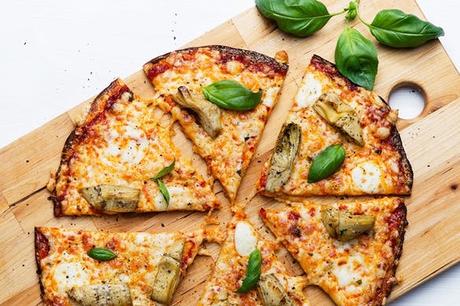
Want to try intermittent fasting?
With our personalized meal plans, we do the planning for you. All you have to focus on is cooking, eating, and enjoying healthy, delicious food.
What other diets work for weight loss?
High-protein, low-carb diets, which might also include short-term intermittent fasting, may be the best choice for many people to succeed with healthy weight loss.
However, these aren't the only choices. The scientific literature is full of studies of variable quality demonstrating healthy weight loss with Mediterranean, vegetarian, vegan, and other diets.
Which diet is right for you? Only you can answer this question. The key is to find a pattern of eating that:
- Focuses on foods you like to eat
- Feels sustainable and enjoyable
- Helps you reduce your caloric intake
- Prevents excessive hunger
- Provides adequate nutrition
You may want to experiment with different diets to find the right one for you. And remember that it's OK to change up your dietary approach as you age - and as your health, eating preferences, and lifestyle change.
How to eat fewer calories
We don't blame you if you cringe when you hear "eat fewer calories." The old message of "eat less, move more" has failed the majority of dieters for decades.
That's not what we are promoting.
Instead, we promote eating better. That means eating in a way that naturally allows you to reduce your calories without hunger. Does it sound too good to be true?
It doesn't have to be.
Studies consistently show that eating more protein leads to decreased hunger. For instance, those who started with eggs for breakfast - as opposed to a bagel - had less hunger and ate fewer calories the rest of the day.
Other studies show that over time, following a higher protein diet leads to less hunger than a lower protein diet. Part of this may be due to changes in hunger hormones. Another possibility is that we are hardwired to eat until we get adequate nutrition, the so-called "protein leverage hypothesis."
This hypothesis suggests that we evolved to seek out the nutrition our bodies need. And the sooner we meet that target, the sooner our bodies shut down feelings of hunger or food cravings. If we don't eat enough protein, our bodies will tell us to keep eating.
Low carb diets, keto diets, and intermittent fasting are other ways to naturally and sustainably reduce caloric intake.
But healthy weight loss isn't just about what you eat. It's also about what you don't eat. Food affects our biology and our brain. Foods like refined carbohydrates can cause increased fluctuations in our blood glucose, which can lead to increased hunger and subsequent excess caloric intake.
"Everything in moderation" is destined to result in weight gain for many people if "everything" includes cookies, chips, and soda. It can also result in weight gain if it includes pasta, bread, and lots of fruit; or even oils, butter, cheese, or nuts.
These are all hyperpalatable foods that can make it difficult to control the amount you eat. Overeating may have nothing to do with willpower or "being strong." Instead, your brain may be telling you: This tastes great and has lots of calories for survival, I want more!
Foods that are high in calories and low in nutrition percentage are everywhere, and they are far too easy to overeat.
How to achieve metabolic health

Improving metabolic health is a crucial aspect of healthy weight loss.
What do we mean by metabolic health? The simple answer focuses on avoiding metabolic syndrome - abdominal obesity, high blood pressure, abnormal blood glucose, elevated triglycerides, and low high-density lipoprotein (HDL) cholesterol.
However, you shouldn't define health as merely avoiding disease. While that may be a great starting point, you don't have to stop there!
Take waist circumference, for example. If you go by the definition used for metabolic syndrome, a normal waist circumference for a male is 39 inches (99 cm). Does that mean 39 inches is your end goal?
Maybe not! A waist size of 35 inches (88 cm) is likely much healthier for a 5' 8" male than 39 inches. Even though this may be your "end goal," don't expect to get there overnight. Continue to strive for slow and steady improvements over time, heading toward a more desirable result.
Just because medicine defines certain metrics as "normal" doesn't mean they are your goal. Instead, focus on the lifestyles that get to the root cause of metabolic disease.
How can you achieve the goal of metabolic health? Here are our top eight tips.
8 tips to improve metabolic health
- Limit carbs - especially refined starches and sugars. Refined starches and sugars are the foods most likely to cause you to overeat calories and raise your blood sugar, insulin, blood pressure, and triglycerides. A low-carb approach may be the most effective diet for improving metabolic syndrome. Low-carb diets also successfully reduce hunger for most people.
- Practice time-restricted eating or intermittent fasting. Giving your body time without ingesting nutrients allows your insulin levels to decrease, improves insulin sensitivity, allows your body to learn to efficiently use fat for energy, and may even tap into autophagy. The net result is improved metabolic health.
How to measure weight loss
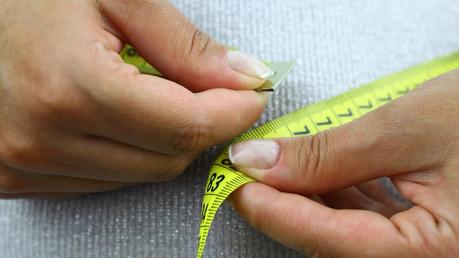
The bathroom scale is the most common tool for measuring weight loss. It is also probably the least helpful!
Your day-to-day weight can vary by several pounds with changes in water weight, or with building new muscle. That means you can lose three pounds of fat without seeing a change on the scale!
The scale may tell you if your weight is going up or down. But healthy weight loss involves much more than the number on the scale.
Consider trying any of these three techniques in addition to using the scale:
- Follow your waist measurement and your waist-to-height ratio. All you need is a tape measure. If your weight is the same on the scale, but your waist is getting smaller, that is still a fantastic healthy fat loss victory! As we detail in our guide on losing belly fat, waist circumference is one of the best measurements to predict metabolic health and track healthy weight loss.
- How do your clothes fit? If you don't have a tape measure, all you have to do is put on your (non-stretchy) pants. It doesn't get much easier than that. Are your pants looser? That means your waist is getting smaller. If you are doing resistance training, you might also find that your arms and legs look more toned. That is a good sign that you are building muscle mass.
- Test your body composition. This requires additional tools - either a bioimpedance scale or a more detailed assessment with a DEXA scan or equivalent measuring device. A DEXA scan will not only tell you if your weight is changing, but it will also quantify how much weight loss was fat mass, lean body mass, and visceral fat. As a bonus, you also can follow your bone density to ensure maintaining strong bones is part of your healthy weight loss progress.
How to break weight loss plateaus
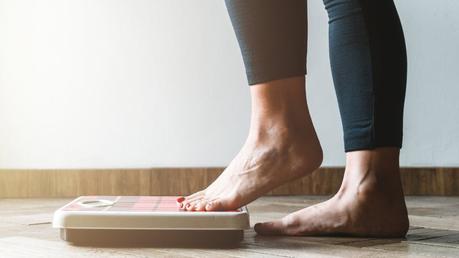
Healthy weight loss is rarely achieved in a straight line of consistent loss. Instead, weight loss tends to come and go, with plateaus as part of an overall decline. As long as the trajectory continues in the right direction, you're succeeding - despite the plateaus.
But it helps to have a plan for when the plateaus come. Here are the eight best tips for helping you to overcome a plateau and get back on track with healthy weight loss.
Top 8 tips for breaking a weight loss plateau
- Are you eating enough protein? Take a couple of days to measure all of the protein you eat and count every gram. Yes, it can be a hassle, but it can also be illuminating. You may think you are eating "plenty of protein," only to find out you're actually getting just 15% of your calories from protein. If that's the case, the best tip for breaking your stall is to increase your protein intake.
- Are you limiting your non-nutrient calories? After increasing your protein and fiber-filled vegetables, what's left? It's usually non-nutrient calories - the extra dose of cream or butter, the rice that "comes with" your meal, the sugary salad dressing that seems so innocent. Or maybe it's the ritual glass of wine with dinner. Experiencing a plateau is the perfect time to take stock of your non-nutrient calories and cut them in half or cut them out completely if you can.
- Are you struggling with cravings or snacking? Usually, addressing protein and fibrous vegetables can help cut down on snacking and cravings. However, if you still find yourself snacking, first make sure you are eating high-protein snacks. Next, make sure you're snacking for real hunger and not boredom or routine. Finally, try eliminating non-nutritive sweeteners that can stimulate cravings, such as erythritol, stevia, and other sweet additives.
- Are you exercising? Exercise by itself is not great for weight loss. However, regular physical activity can help maintain weight loss and break plateaus when combined with healthy eating. Just make sure your exercise helps build muscle and doesn't leave you hungry and craving food. For instance, you may find 20 minutes of resistance training more effective than 45 minutes on a treadmill.
- Have you tried time-restricted eating or intermittent fasting? For some, spacing out the timing between meals can naturally reduce caloric intake and allow for lower insulin levels. The combination may be enough to break a weight loss plateau.
-
Are you fasting too much? Just because a little fasting can help with weight loss doesn't mean more is always better, and it doesn't mean fasting is always a good thing. Some people react to fasting by feeling the need to binge or over-consume calories to "make up" for lost meals. People may even rationally know they shouldn't react that way, but the pull is too strong to resist.
If this sounds familiar, then intermittent fasting may be doing you more harm than good. Going back to a regular eating schedule may allow you to control your portion sizes better and break your weight loss plateau.
Read even more in our detailed guide on tips to break a weight loss stall.
Maintaining weight loss long term
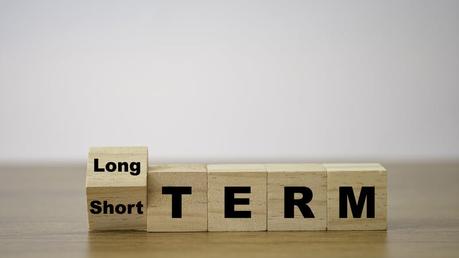
Maintaining weight loss can be as simple as "keep doing what you are doing," but often, the reality of maintaining healthy eating habits is harder to accomplish.
Authors have written hundreds of books on tips to maintain beneficial behavior change, and most of the tips aren't a secret. The problem is when the recommendations become more items on your "to-do" list, adding chores to your routine that take time and energy you don't have to give.
If that's the case, don't let yourself get overwhelmed. Pick one or two tips that resonate most with you, and stop there. Just because a tip made the list doesn't mean you have to do it. The list is merely a collection of suggestions to try and see what works best for you.
Top tips for long-term success
- Connect with your why, to keep your motivation for maintaining your weight loss front and center.
- Create accountability with a partner, a coach, an app, or a calendar.
- Control your environment. Don't allow temptations in your house or workplace.
- See your new way of eating as a lifestyle, not a diet. It isn't something you "do." It's something you "are." The language you use can make all the difference.
- Keep it enjoyable. Find recipes you love that fit within your eating pattern.
- Celebrate small successes on your way to bigger successes.
- Realize that you won't be perfect, and that's OK. Minor detours don't have to derail you. Anticipate roadblocks and have a plan to get past them.
- Incorporate smart strategies for optimizing your sleep, stress management, and physical activity. Better habits in these areas can help with long-term, healthy weight maintenance.

